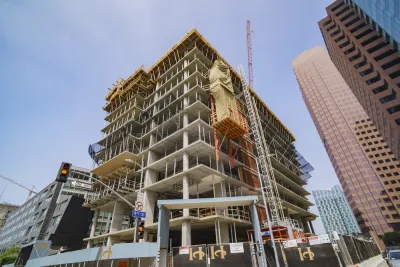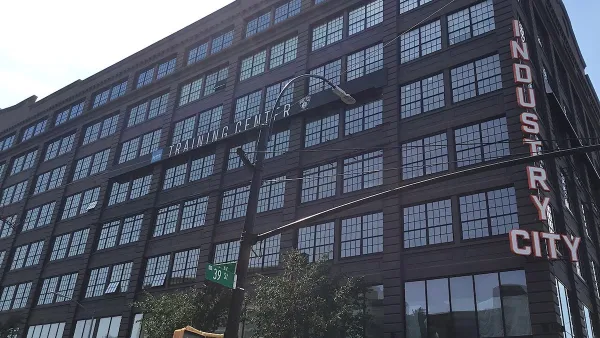Even if new housing reduces rents regionwide, scholars are divided as to when and whether new market-rate apartments reduce rents in nearby blocks. A new study seeks to answer this question.

Numerous economic studies show that cities that allow lots of new housing have lower housing costs than places with highly restrictive zoning, and thus that the anti-housing policies of cities such as New York and San Francisco (and their suburbs) contribute to regional high rents.
But even pro-housing commentators have suggested that this might not be true at the neighborhood-by-neighborhood level, at least in newly gentrifying neighborhoods. Some believe that such housing increases demand for a neighborhood, which in turn breeds gentrification, which in turn creates higher rents.
However, a new study, performed by two economists and one doctoral student,* suggests that new market-rate housing reduces rents. This study covered buildings in 11 major cities that were built between 2014 and 2016. As a proxy for gentrification, the study focused on areas where there was "no other luxury building within 500 meters." However, these areas were already wealthier than the citywide average, with rising rents and an above-average percentage of new housing built since 2010.
The study found that before construction, rents rose more rapidly within 200 meters of these new buildings than in areas 200-800 meters away. By contrast, after construction rents rose more slowly within 200 meters of these buildings. Thus, it appears that these new buildings caused rents to rise less rapidly (at a time when rents were increasing almost everywhere). Although neighborhood population increased near these buildings, the increased demand was not sufficient to raise rents.
On the other hand, this study does not necessarily prove that new housing in every conceivable neighborhood will lower housing prices. At least two questions require further research: First, do these results apply for all cities? Or is there a difference between already-expensive cities such as New York (where upzoned areas are often just a few blocks away from downzoned areas, thus funneling demand into the former set of areas) and cheaper cities such as Atlanta? Second, are the results different for lower-income neighborhoods (as opposed to neighborhoods that are middle-class or nonresidential)?
*I am happy to mention them and thus plug their work: Brian James Asquith, Evan Mast, and Davin Reed.

Analysis: Cybertruck Fatality Rate Far Exceeds That of Ford Pinto
The Tesla Cybertruck was recalled seven times last year.

National Parks Layoffs Will Cause Communities to Lose Billions
Thousands of essential park workers were laid off this week, just before the busy spring break season.

Retro-silient?: America’s First “Eco-burb,” The Woodlands Turns 50
A master-planned community north of Houston offers lessons on green infrastructure and resilient design, but falls short of its founder’s lofty affordability and walkability goals.

Test News Post 1
This is a summary

Analysis: Cybertruck Fatality Rate Far Exceeds That of Ford Pinto
The Tesla Cybertruck was recalled seven times last year.

Test News Headline 46
Test for the image on the front page.
Urban Design for Planners 1: Software Tools
This six-course series explores essential urban design concepts using open source software and equips planners with the tools they need to participate fully in the urban design process.
Planning for Universal Design
Learn the tools for implementing Universal Design in planning regulations.
EMC Planning Group, Inc.
Planetizen
Planetizen
Mpact (formerly Rail~Volution)
Great Falls Development Authority, Inc.
HUDs Office of Policy Development and Research
NYU Wagner Graduate School of Public Service





























